

|
SISKIN LANE STRATA
The Siskin Lane strata is a carefully planned conservation development located on the south end of Cortes Island. Siskin Lane promotes conservation and sustainable living.
Where is Cortes Island?
We’re located in the province of B.C., Canada, on Cortes Island at the entrance to world famous Desolation Sound and Marine Park. Hourly Ferry service from Campbell River to Quadra Island, connects to six scenic sailings daily to Cortes Island. Travel time from Campbell River is approximately 1 1/2 hours. Maps here
What does the Siskin Lane strata look like?
We will have photos of the Siskin Lane property very soon.
See a map of the Siskin Lane property
See an aerial photo of the Siskin Lane property and surrounding area.
How many lots are there?
Renewal Land Company has created twenty-five lots in total in the Siskin
Lane development. Twenty-three of them are part of the Siskin Lane Strata,
while the other two lots are fee simple residential lots that are not part
of the strata. For more information contact Vicki deBoer at vdeboer@connected.bc.ca or Renewal Land
Company.
Siskin Lane is a bare land strata development. A bare land strata plan
divides a property into residential strata lots and common property. Owners
have individual ownership of their strata lot as well as an undivided share
in ~140 acres of common property, including the shared access road.
Strata developments in British Columbia are regulated by the Strata Property Act. The Siskin
Lane Strata also has a set of strata bylaws that sets out how landowners
must manage the common property, and how they share the responsibilities of
strata management. In addition, Siskin Lane is governed by a conservation
covenant, held by The Land Conservancy of BC.
How is the Siskin Lane strata structured?
The Siskin Lane strata consists of 23 strata lots, common property and public trails. There is also a Public Park adjoining the strata property. There are three zones on the property. A conservation covenant protects the entire strata. Click here for more information on the conservation covenant and how it works.
Forest Conservation Area:
A 129 acre (52-hectare) zone dedicated to conservation and forest management, with priority given to restoring old-growth forests. A conservation covenant will ensure that riparian areas, wildlife trees and other sensitive areas are protected. This area will be common property under the joint ownership of the Siskin Lane strata residents. The Forest Conservation Area encompasses fifty percent of the total property. Residential Use Area:
A 2-acre (0.75 hectare) zone on each of the clustered strata lots where owners can build a home and establish gardens and outbuildings (e.g. woodsheds). A minimum of 25% of the trees in this zone must be permanently protected. Residential Conservation Area:
A 2-acre (0.75 hectare) zone on each of the clustered strata lots where conservation and privacy are prioritized. Timber harvesting and other forms of development are restricted in this zone, and no structures can be built. At least 75% of the trees in this zone must be protected. What size are the lots?
The lots are approximately 3.75 acres, or 1.5 hectares. There is one 5-acre lot.
Are the lots serviced?
Yes. RLC drilled wells on most lots and they each have an approved site for
septic facilities. Owners are responsible for installing a septic field or
treatment system of their choice. Each lot also has a roughed-in driveway to
access potential building sites. There is underground power and phone along
the access road to the driveway of each lot. Owners are responsible for
extending the power and phone to their home. All power and phone lines must
be underground.
How much can I develop my strata lot?
Each strata lot is divided into two zones. The first zone is a 2-acre ‘residential use area’ where you can build your home, garden, shed and other outbuildings. You must protect at least 25% of the trees in this zone. You can only build one residential dwelling on your lot. In addition, the combined footprint of ALL your built structures (home, woodshed, garage, workshed etc.) cannot exceed 5000 square feet. This includes any decks!
The second zone is a ‘residential conservation area’ that consists of a 15-metre (~45 feet) reserve area around the boundary of each strata lot. You must protect at least 75% of the trees in this zone. There cannot be any structures or development within the residential conservation area.
The strata lots cannot ever be subdivided or used for industrial purposes. Commercial use is limited to home-based businesses that do not affect the landbase at all.
Any pesticides, herbicdes or other harmful chemicals are prohibited.
How will environmentally sensitive areas and features such as wildlife trees be protected on each lot?
Protecting the environment and minimizing the impact of residential use is a priority for Siskin Lane. The entire strata is governed by a conservation covenant that protects ecological values and restricts harmful practices. For a complete review of the conservation covenant and what it means to Siskin Lane landowners click here.
Individual wildlife trees on each lot are permanently protected under the conservation covenant. In addition, there are 15-metre protective buffers along creeks, riparian areas and ecologically sensitive areas.
Siskin Lane is based on principles to help live sustainably on the land. We’ve adopted ‘Smart Growth’ principles wherever possible to minimize the impact of residential use.
What is a conservation covenant and what does it mean for Siskin Lane residents?
For detailed information on conservation covenants and what they mean for Siskin Lane residents click here. We hope that the use of conservation covenants on Siskin Lane will encourage other landowners to consider protecting ecological values on their property with covenants, or other stewardship initiatives.
How much can the strata develop the common property?
Very little! There cannot be any new roads built anywhere on the common property, and it can never be subdivided. The common property cannot be sold (strata owners can sell their strata lots along with their undivided interest in the common property, but the common property can never be split off and sold separately).
Industrial use is prohibited, and commercial use is limited under the conservation covenant.
Will there be logging on the common property?
Not for the foreseeable future. The Siskin Lane property was partially logged by its previous owners in the late 1990’s. As a result there are small patches of land where the trees are less than ten years old. In order to allow the land to heal and the forests to age naturally on the Siskin Lane property, the conservation covenant prohibits logging until at least 85% of the land is old forest. This will not happen for at least seventy years.
Once there is old forest on at least 85% of the land (i.e. several decades from now) the conservation covenant allows a very small amount of ecologically sensitive logging less than half of the annual rate of growth.
We made the decision to restrict logging for the foreseeable future because of our focus on protecting biodiversity and forest ecosystems. Siskin Lane is intended to be a model that shows it is possible to live lightly on the land and integrate conservation and environmental protection with low-impact residential development.
I heard there are public trails on the property. What does this mean?
The Siskin Lane Strata includes a network of over ten kilometers of public
trails for non-motorized use. The trail network links in with a larger
network of trails on southern Cortes Island, and offers an alternative route
to Manson's Landing (the main commercial area on Cortes). The trails are
protected by a statutory right-of-way (a form of legal easement) that
ensures they will always be open for public use. The right-of-way is held by
the Comox-Strathcona Regional District (CSRD). The CSRD is responsible for
trail maintenance and also holds insurance for all the trails. Owners in the
Siskin Lane strata are not responsible or liable for the trails, but they do
retain ownership of the land the trails are on. Motorized use is
prohibited on the trails.
We hope that the creation of these public trails encourages other landowners
to consider placing public rights-of-way on their land, where appropriate,
to create a permanent network of public trails across Cortes Island.
Is there a public park as well?
Yes. As part of the development of the Siskin Lane strata, Renewal Land
Company donated a 13 hectare (32 acre) park to the Comox-Strathcona Regional
District. This park is adjacent to the Siskin Lane strata. The park is
permanently protected with a conservation covenant, held by The Land
Conservancy of BC. No logging or development can take place in the park.
There is a community garden on the property. What does this mean?
Part of the common property has been designated as a community garden for members of the strata to share. Strata owners could choose to crate an orchard as well in this area. The community garden will be a place where strata owners and community members can come together to share garden space.
Chronology of Siskin Lane Conservation Development Project
RLC has been working on Cortes Island since January 2003. The following chart is a brief chronology of our Siskin Lane Conservation Development.
|
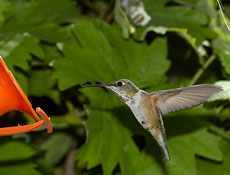
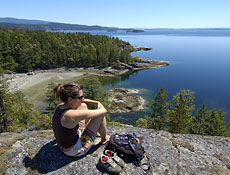

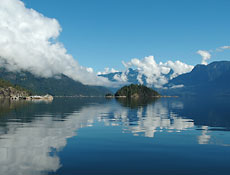
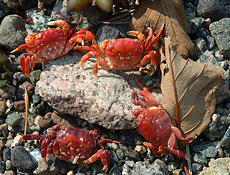
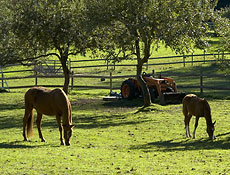

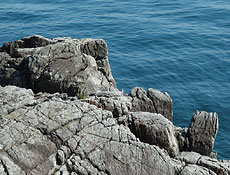
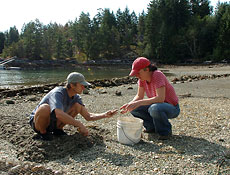
|